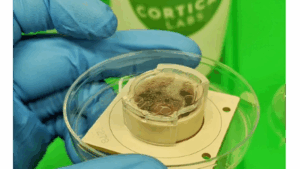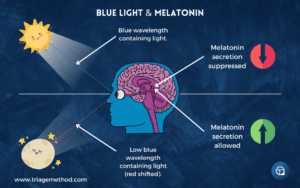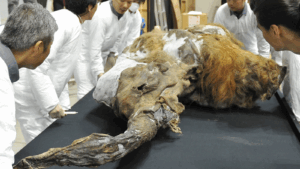A genius author redefines cryosleep in a groundbreaking sci-fi novel
You may have heard of some form of human “deep-sleep,” “cryosleep,” or “hibernation” in sci-fi media. Usually, this is illustrated with a human sleeping and/or frozen in a pod, while the world continues around them. This seems like far-fetched technology from the future, but what if a brilliant sci-fi writer had come up with a realistic way for humans to hibernate with today’s technology?
In the book Project Hail Mary by Andy Weir, humanity must send a crew of three astronauts to a star system 12 light-years away to save the Earth from a bacteria that feeds on sunlight. You would think that the journey would take about 12 years, but since the ship that powers astronauts can accelerate to 99% of the speed of light, it took three to four years. This is because of Einstein’s theory of special relativity, which states that the speed of light is the same everywhere. After a bit of physics, math, and logical reasoning based on this fact, real theoretical physicists were able to conclude that the faster you go, the slower time passes for you (3). This is called time dilation (3).

Project Hail Mary by Andy Weir
Despite this time dilation, the crew would still be spending three to four years with each other. A crew living in close quarters for such a long time could result in murder, as proven by a Russian experiment on long-term confinement (4). Therefore, the scientists in charge of this “Hail Mary” of a mission decide to put the crew in a coma while they travel from Earth to the other star system. This poses its own problems, as comas are often deadly, and the patients require constant care while they sleep (2). In the book, the scientists start by solving the primary cause of death in comas: the gradual corruption of genetic material due to your body’s relative cellular inactivity and the resulting slow shutdown of your vital organs. The scientists discover that certain individuals possess a “coma-resistance” gene, which significantly increases their chances of surviving comas. This finding is similar to the real-life rm1/rm2 gene modifiers that can protect the body from coma-related gene damage (1). Although this is a solution, it narrows down the pool of potential astronauts. Then, the scientists create a set of robotic arms powered by a procedural program and using surgical equipment in order to take care of the astronauts while they are in their comas. These arms feed the astronauts, gently shock them from time to time to give them exercise and keep them fit, trim their hair, inject fluids via an IV tube, and stop diseases. However, no system created so quickly is perfect, and over the span of their four-year-long journey, two out of the three astronauts die.
Even though such a technology would exclude most people from interstellar travel, this is probably how humanity would really migrate among the stars once we invent an engine or drive capable of taking us interstellar distances, such as an antimatter drive or a highly efficient fusion drive. However, the book doesn’t stop there. Project Hail Mary continues to meticulously use real physics throughout. Andy Weir is also the author of The Martian, another amazing book. I highly recommend giving Project Hail Mary a read, but if you’re not interested in books, you can watch the movie starring Ryan Gosling, in theaters this coming March.
Sources
- Asadi, F (2022, January 5) Genes Associated with Coma or Recurrent Coma and Role of Next Generation Sequencing in Diagnosis of Disease-Causing Genes, Medical Laboratory Journal. www.mlj.goums.ac.ir/browse.php?a_id=1343&sid=1&slc_lang=en&html=1
- Durning, M (2024, January 19) Coma: Types, Causes, & Treatments, WebMD. https://www.webmd.com/brain/coma-types-causes-treatments-prognosis
- Editors of Encyclopedia, B () time dilation, Encyclopedia Britannica. https://www.britannica.com/science/time-dilation
- Leonard, D (2023, November 19) Russia’s Long-Duration Space Journey on Earth Put 6 People in Isolation for a Year, Space. www.space.com/russia-sirius-23-astronaut-isolation-study
Image






Comments are closed.